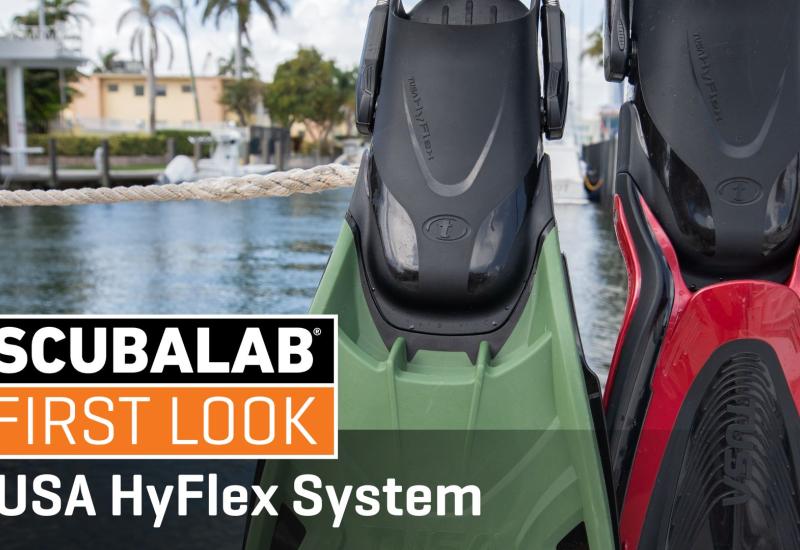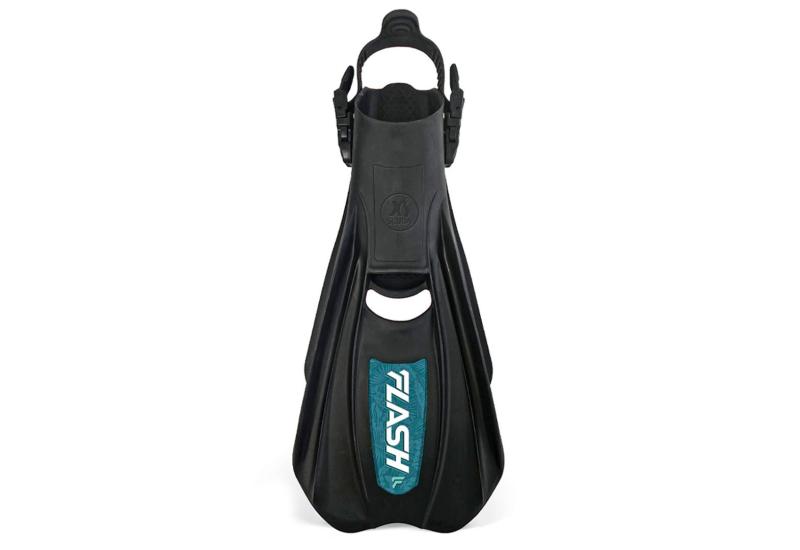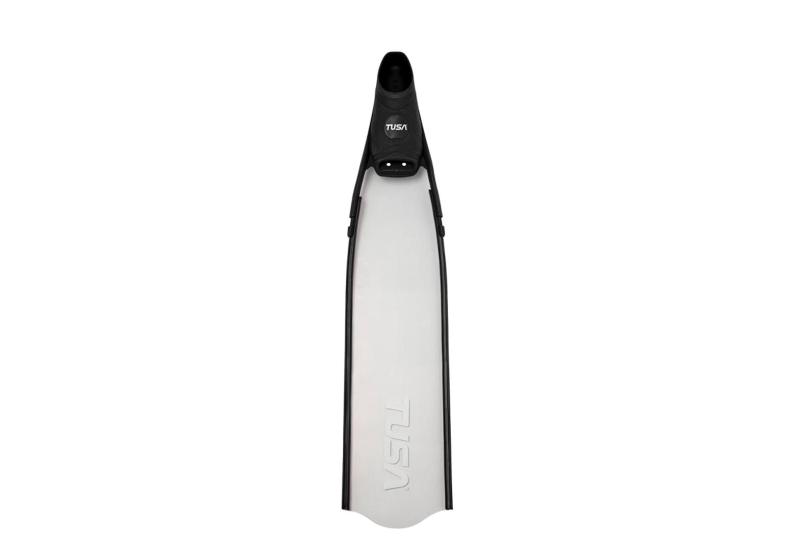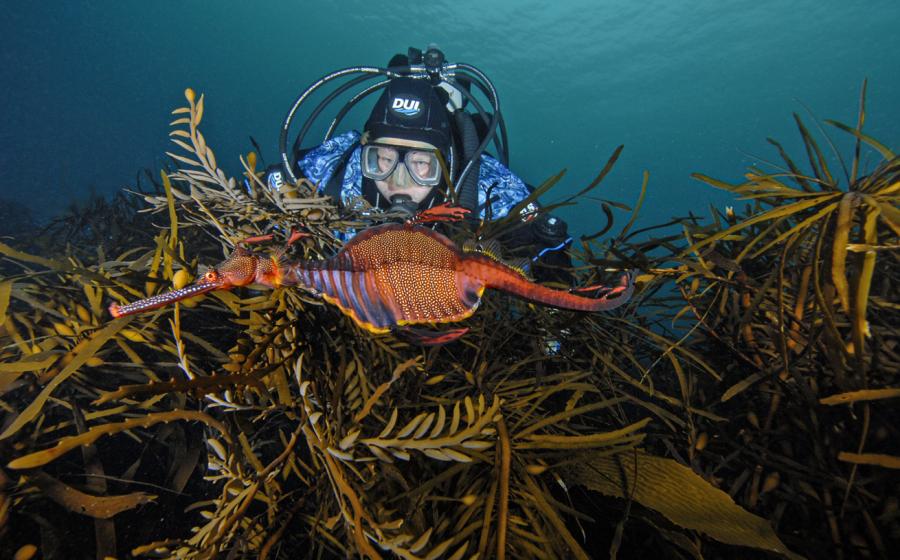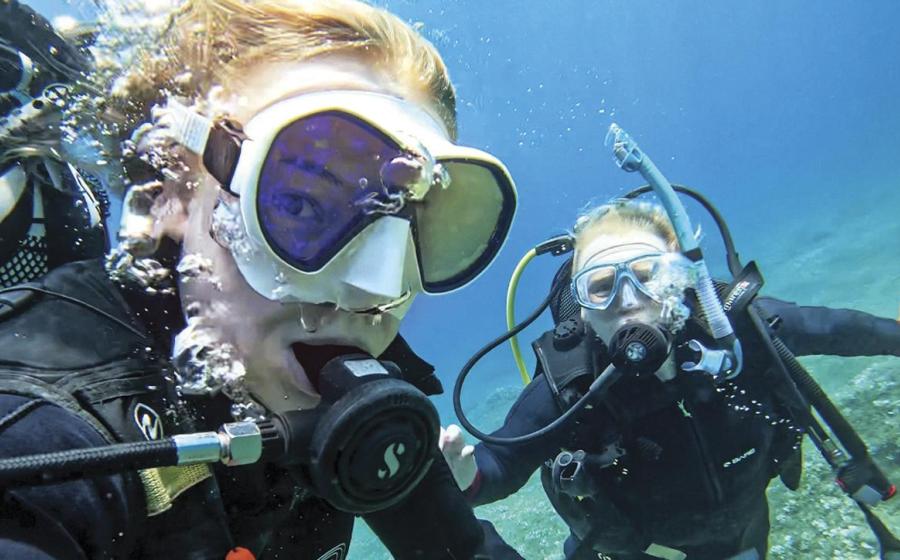Habitat Curacao & Easy Divers Host the 2004 Scuba Lab Fin Test
 |
 In May 2004 a dedicated team of twelve fin testers converged at Habitat Curacao. Their mission: to dive from sun up to sun down, doing timed speed trials and following an underwater slalom course, to gather data for Scuba Lab's annual fin test. Our November 2004 issue contains the complete results, including this year's Testers' Choice models. Here's a behind the scenes look at this year's fin test. |
 |
 Habitat Curacao proved a perfect venue for this year's tests. Located 25 minutes from Willemstad, Curacao's capital, the Scuba Lab team was able to dive, eat, and sleep in one convenient location. Eclectic architecture paired with the stunning backdrop of turquoise water makes Habitat Curacao a visual treat. After a day of diving, guests can relax in the horizon pool or avail themselves of the services of the resort spa. |
 |
 |
 Easy Divers, the on-site dive shop, bent over backwards to accommodate the Scuba Lab tests--from making sure there was fresh drinking water available out on the dock the tests were staged from to dedicating a dive boat each afternoon to the test group. After a brief tour and orientation (like the one given by Ann Marie, pictured above), divers are able to sign up for boat dives and grab tanks 24 hours a day for shore diving on the house reef. |
 |
 Oceans restaurant helped out by taking lunch and dinner orders in advance to make sure the testing could remain on schedule. The test group ate breakfast, lunch, and dinner in the picturesque, open air dining room and socialized at the bar. |
 |
 Scuba Lab made sure each team member had a marine park tag from Easy Divers. The voluntary $10 donation helps fund eco-friendly initiatives such as buoy projects and reef clean-ups. Not only does the money go to a good cause, the diver-shaped tag doubles as a bottle opener! The tags have been available since 2000, produced in a different color each year. |
|||
|---|---|
|

|

|
The first order of business each year is matching up testers with fin sizes. Confronted with carefully orchestrated piles of numbered fins, testers work their way through each batch and tell Scuba Lab staff what size they take for each number.
 |
 Each morning, buckets of fins lined the dock as test divers entered the water. Scuba Lab staff kept track of which fins each buddy team had tested and handed down new sets of fins as each team completed speed or slalom trials. |
 |
| Testers use custom speedometers, pictured above, during the speed trials. Holding the device in front of them with arms outstretched, a propeller spins and activates the digital display as testers fin in a straight line along a course marked under water. |
 |
 Every day after lunch, testers boarded one of Easy Divers' boats for a 2-tank excursion. Wearing a different pair of test fins for each dive, they evaluated how the fins performed in "real world" diving situations. In the water and during surface intervals, they logged their comments on slates outfitted with waterproof paper. |
 |
| At the end of this year's fin tests, the volunteer testers are left with the memories, pictures, videos, and, yes, the T-shirts, and the hope that next year will bring another week of fin testing and friendship on an island in the sun. |
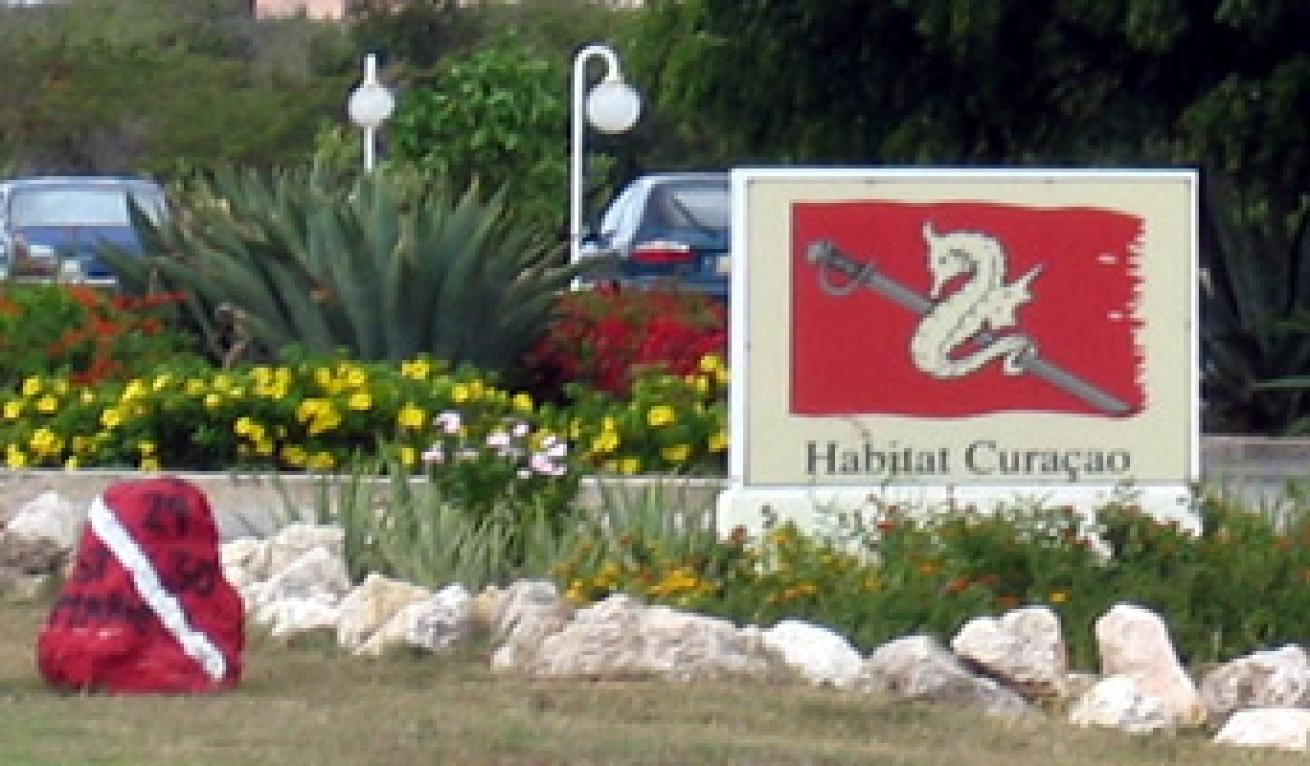
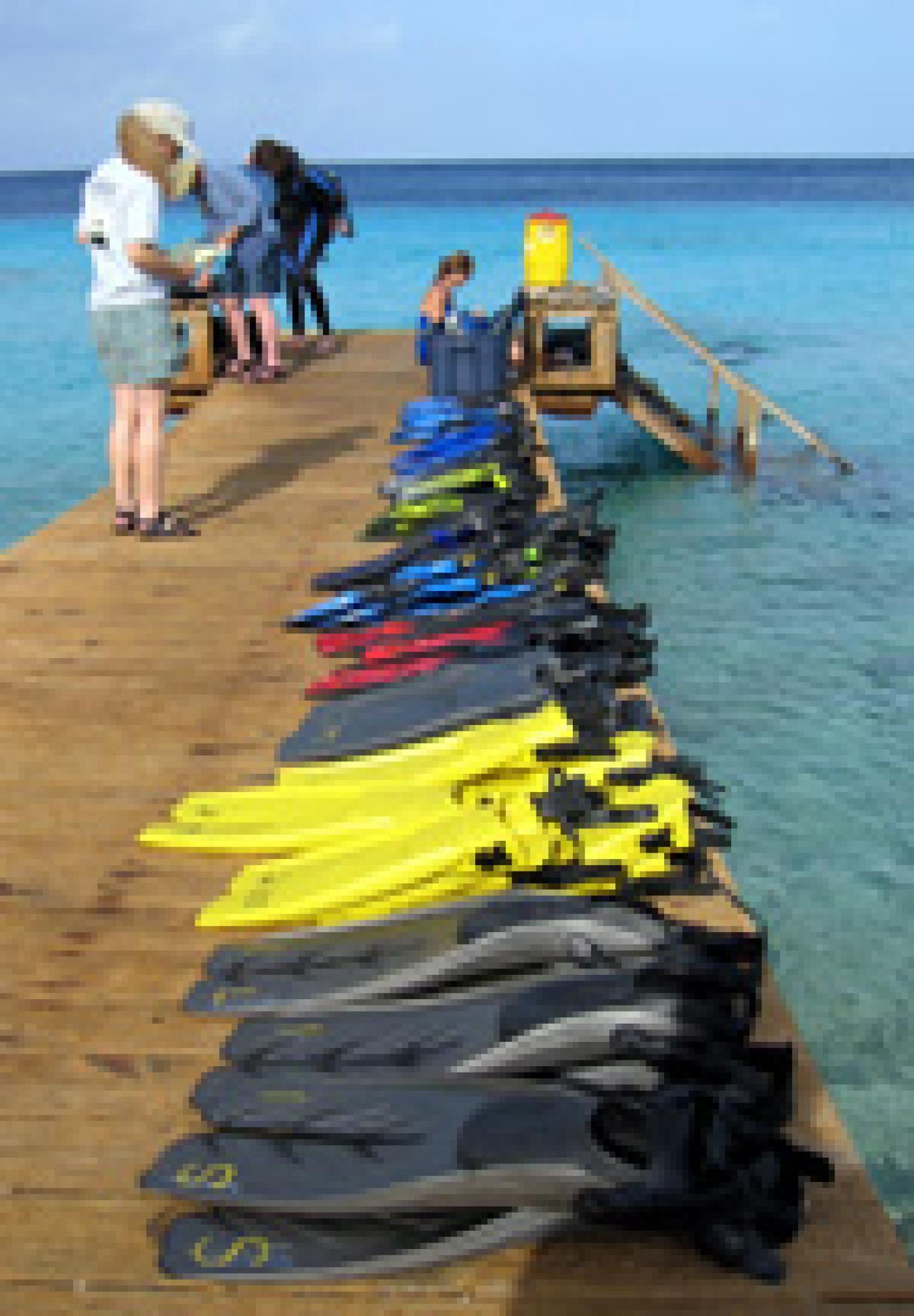
In May 2004 a dedicated team of twelve fin testers converged at Habitat Curacao. Their mission: to dive from sun up to sun down, doing timed speed trials and following an underwater slalom course, to gather data for Scuba Lab's annual fin test. Our November 2004 issue contains the complete results, including this year's Testers' Choice models. Here's a behind the scenes look at this year's fin test.
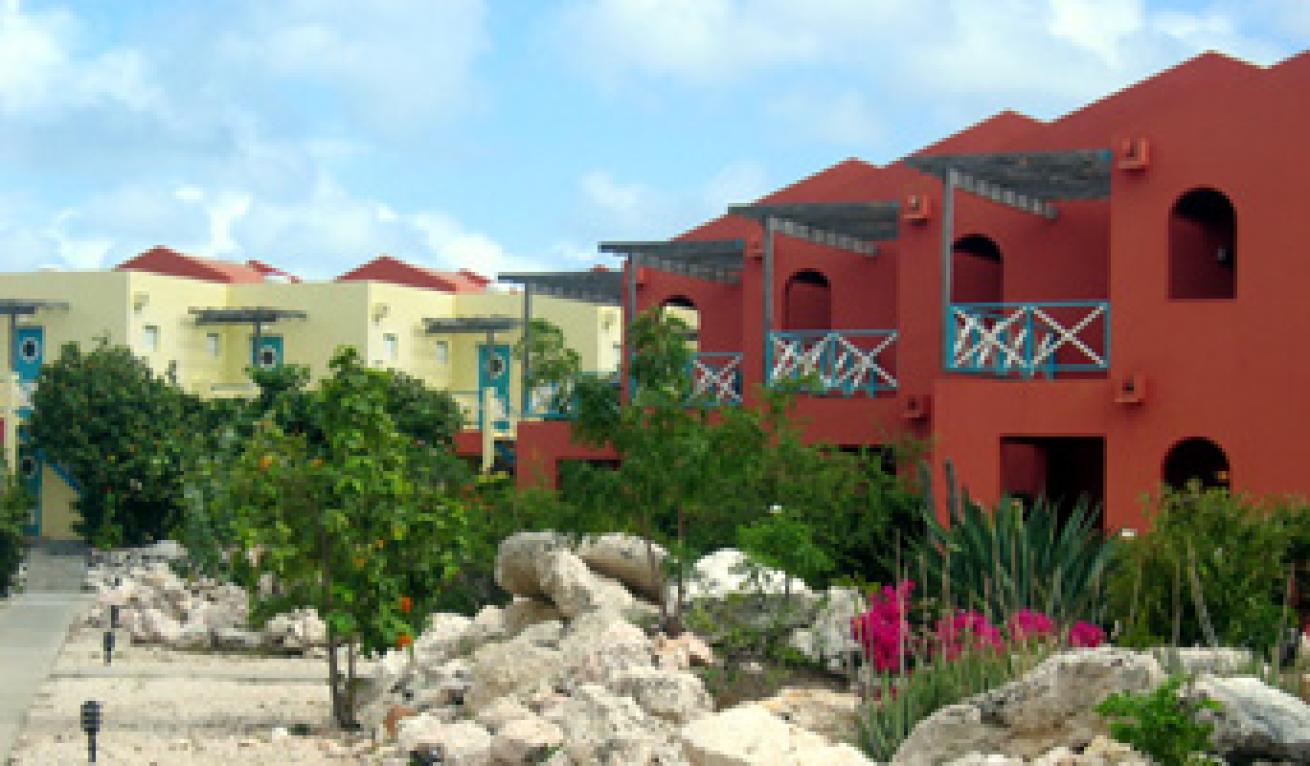
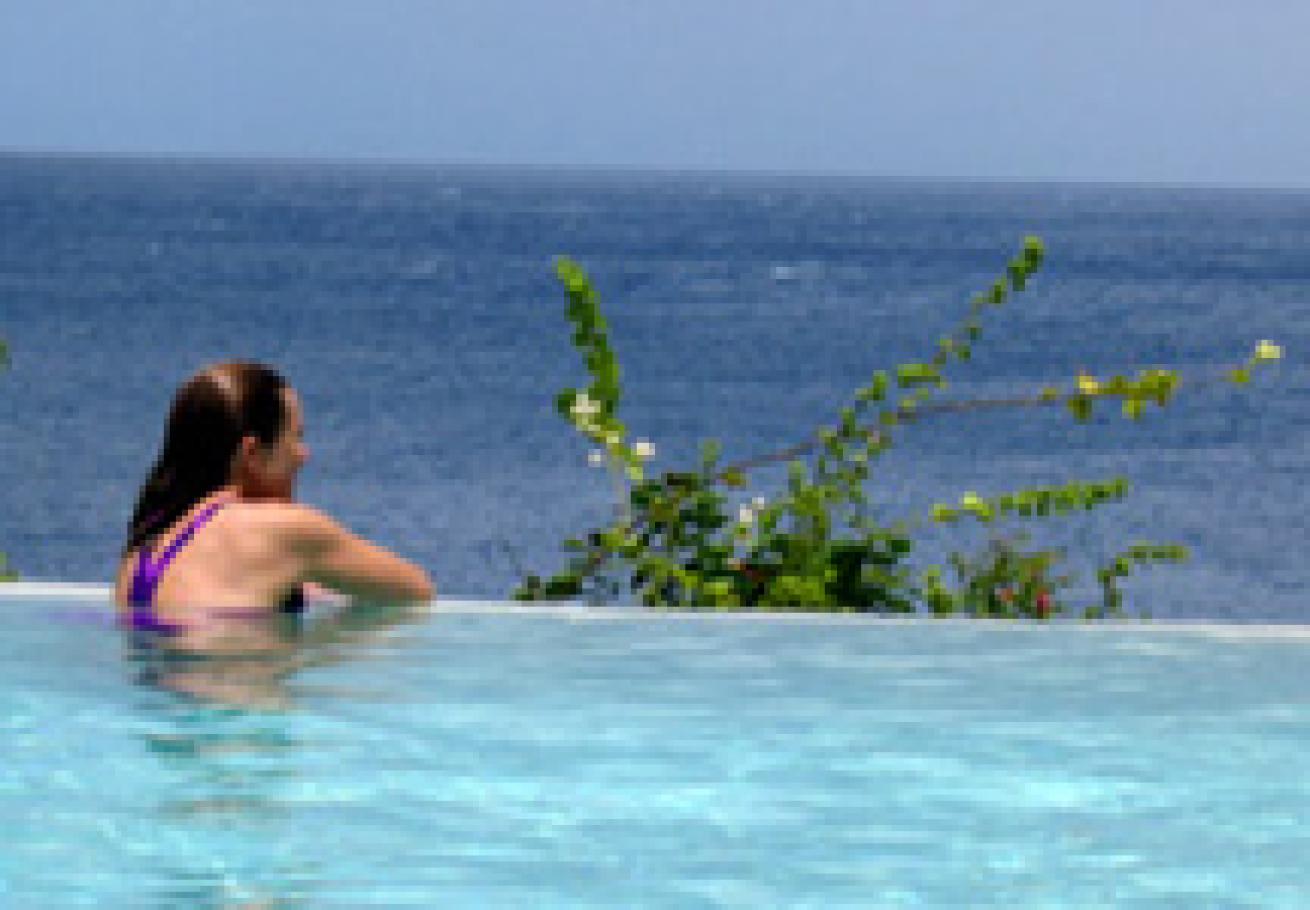
Habitat Curacao proved a perfect venue for this year's tests. Located 25 minutes from Willemstad, Curacao's capital, the Scuba Lab team was able to dive, eat, and sleep in one convenient location. Eclectic architecture paired with the stunning backdrop of turquoise water makes Habitat Curacao a visual treat. After a day of diving, guests can relax in the horizon pool or avail themselves of the services of the resort spa.
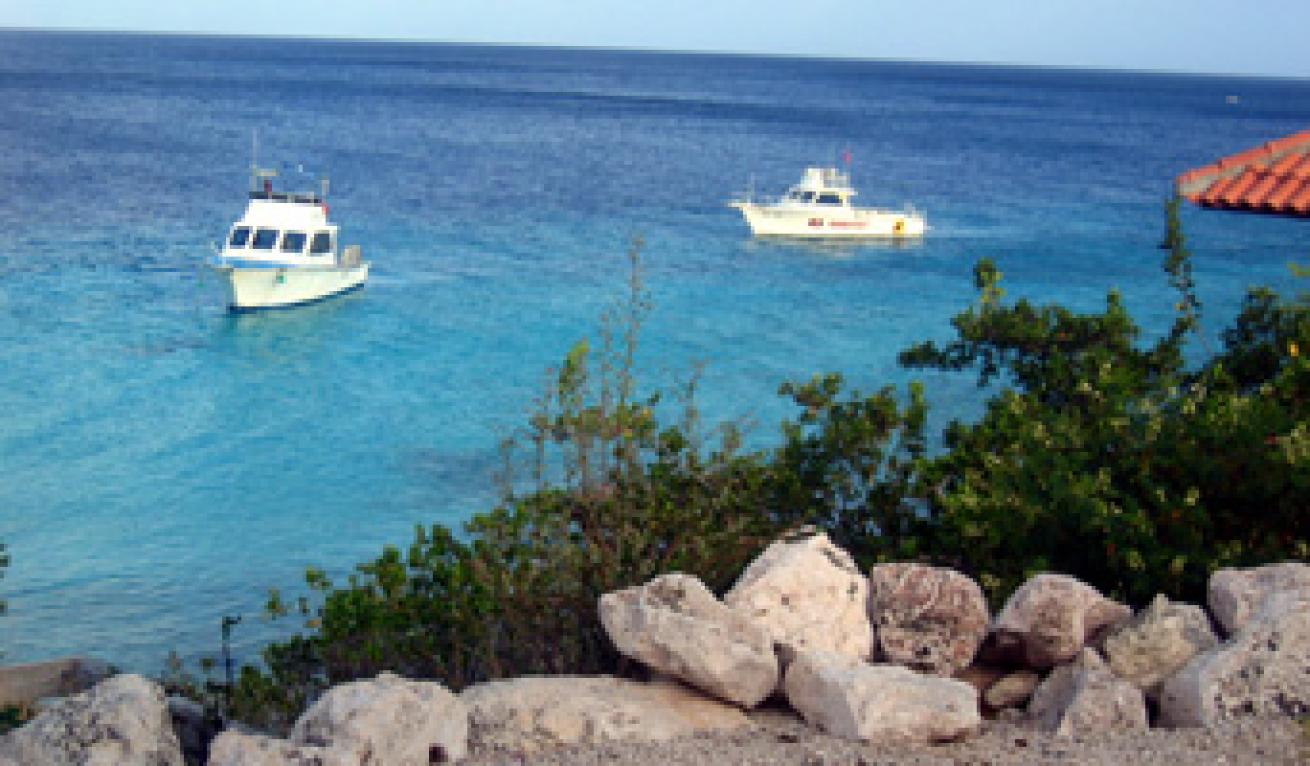
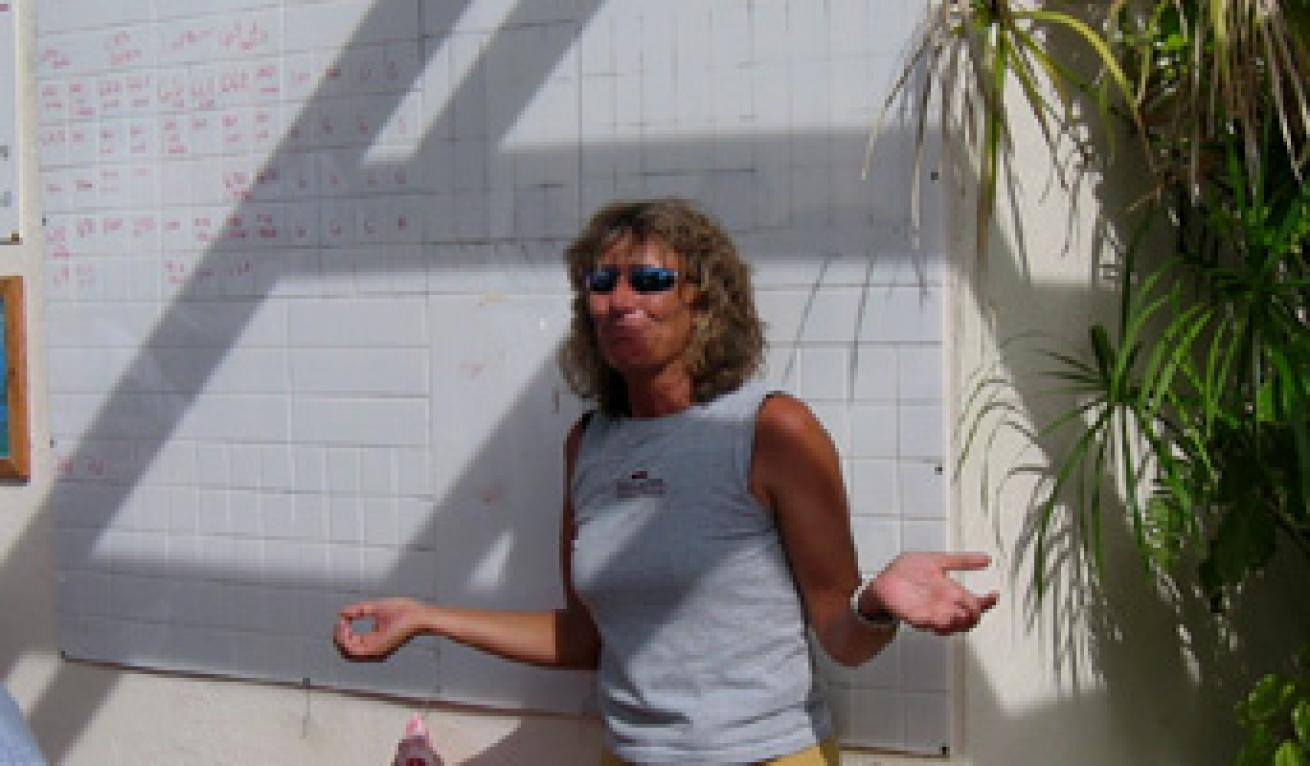
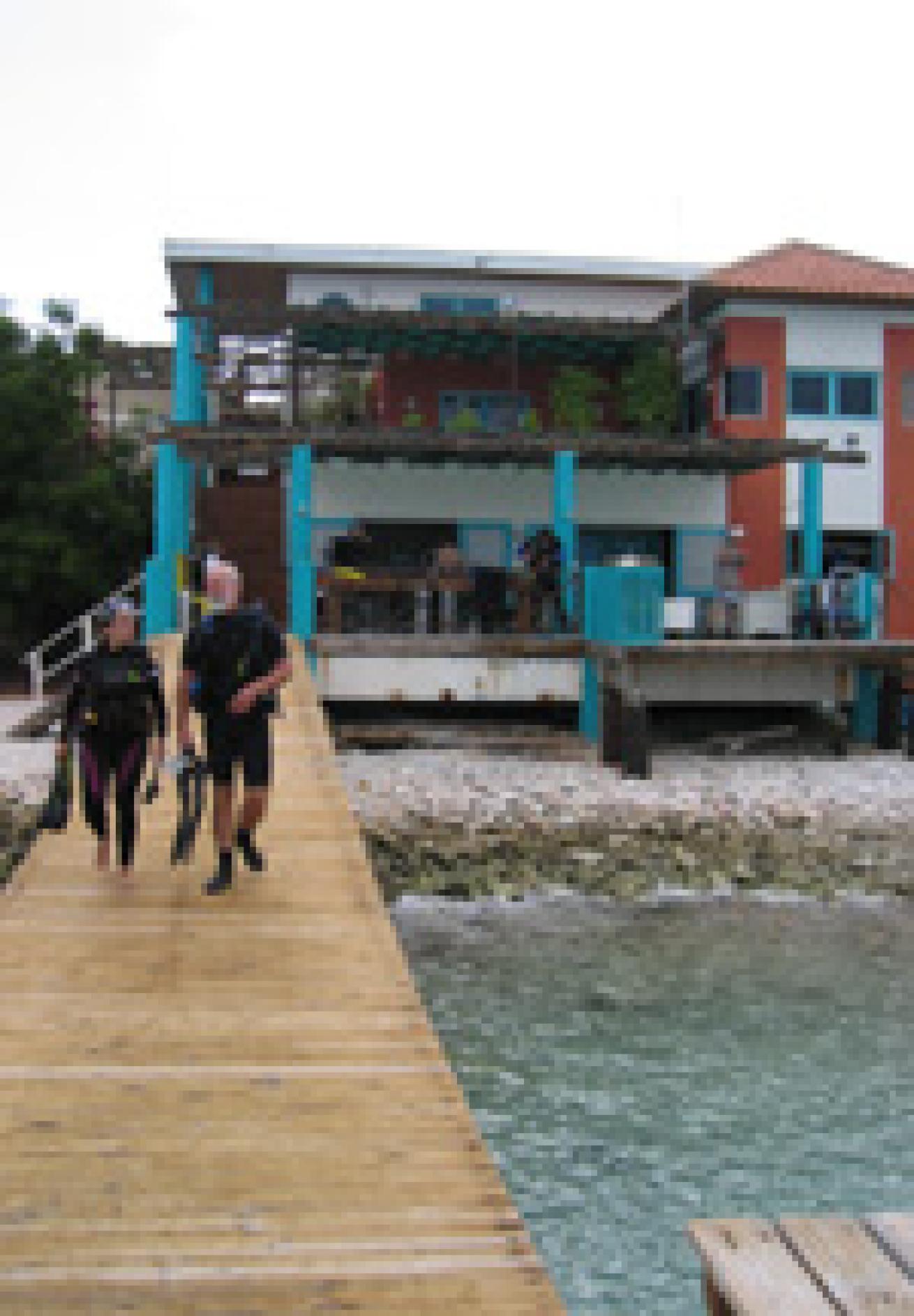
Easy Divers, the on-site dive shop, bent over backwards to accommodate the Scuba Lab tests--from making sure there was fresh drinking water available out on the dock the tests were staged from to dedicating a dive boat each afternoon to the test group. After a brief tour and orientation (like the one given by Ann Marie, pictured above), divers are able to sign up for boat dives and grab tanks 24 hours a day for shore diving on the house reef.
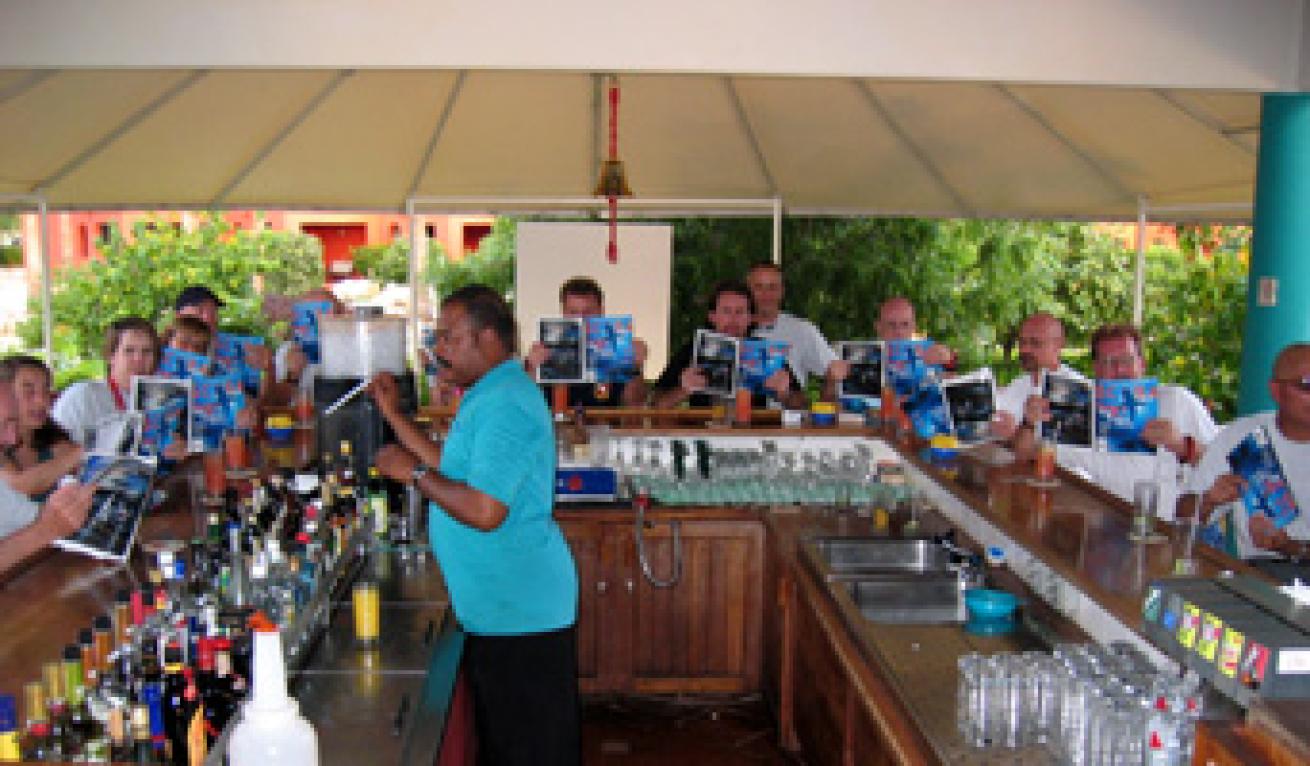
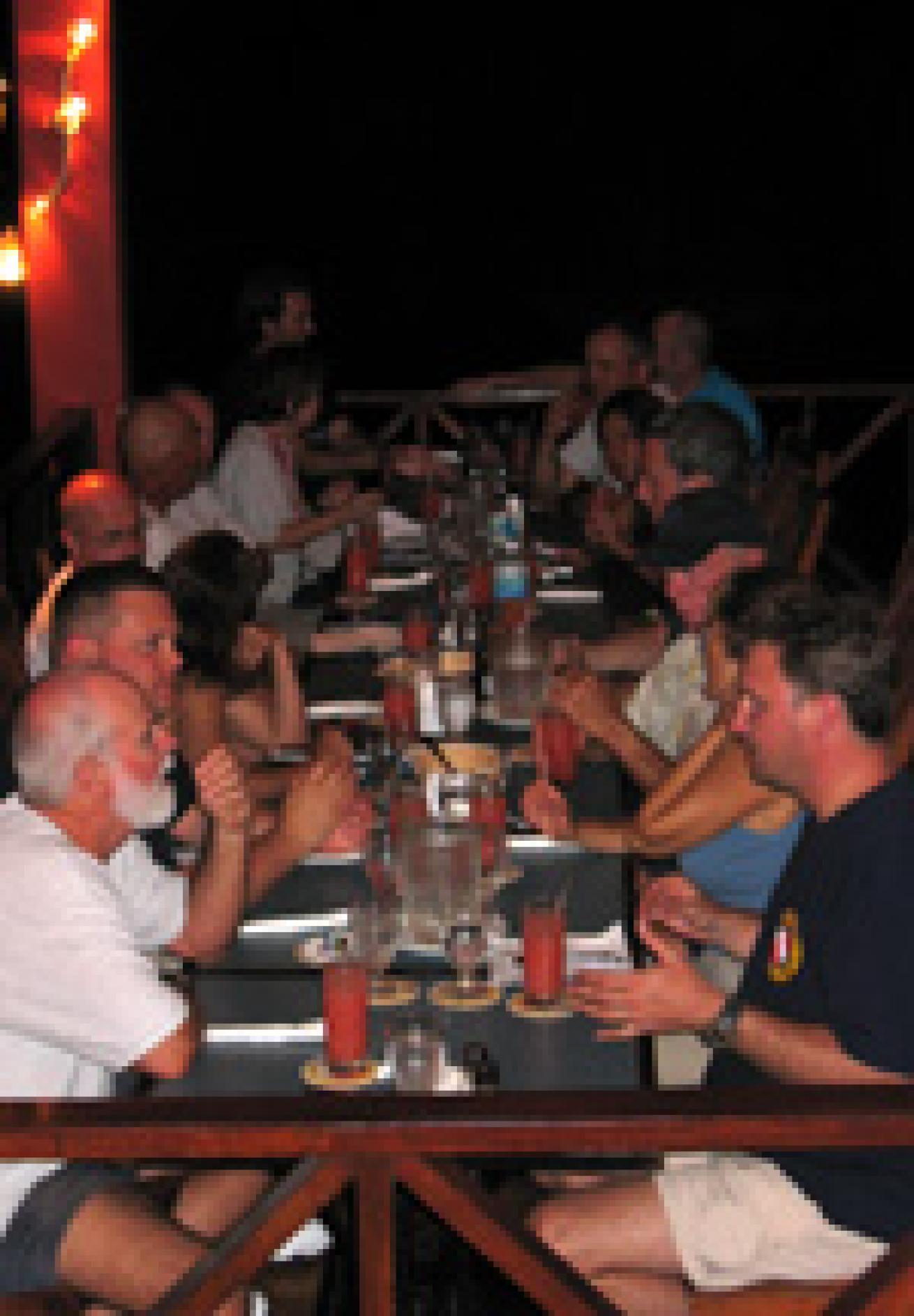
Oceans restaurant helped out by taking lunch and dinner orders in advance to make sure the testing could remain on schedule. The test group ate breakfast, lunch, and dinner in the picturesque, open air dining room and socialized at the bar.
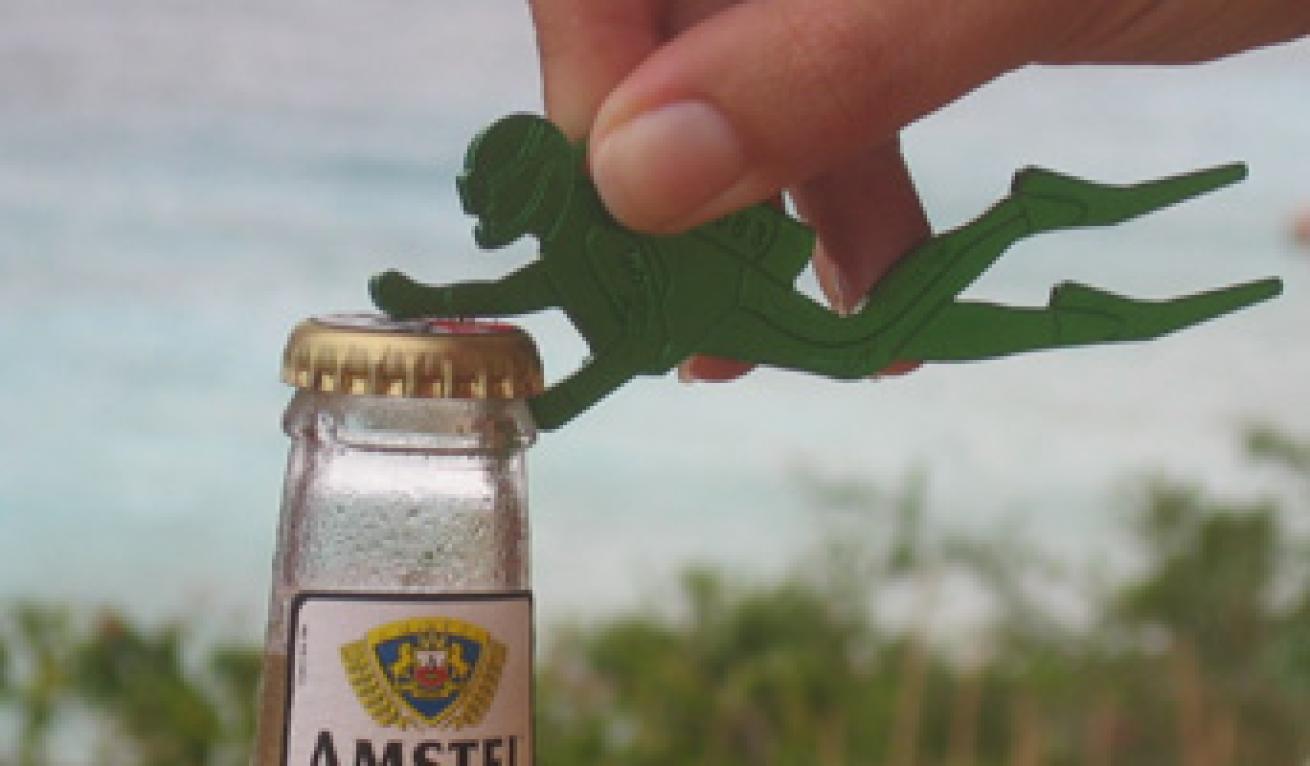
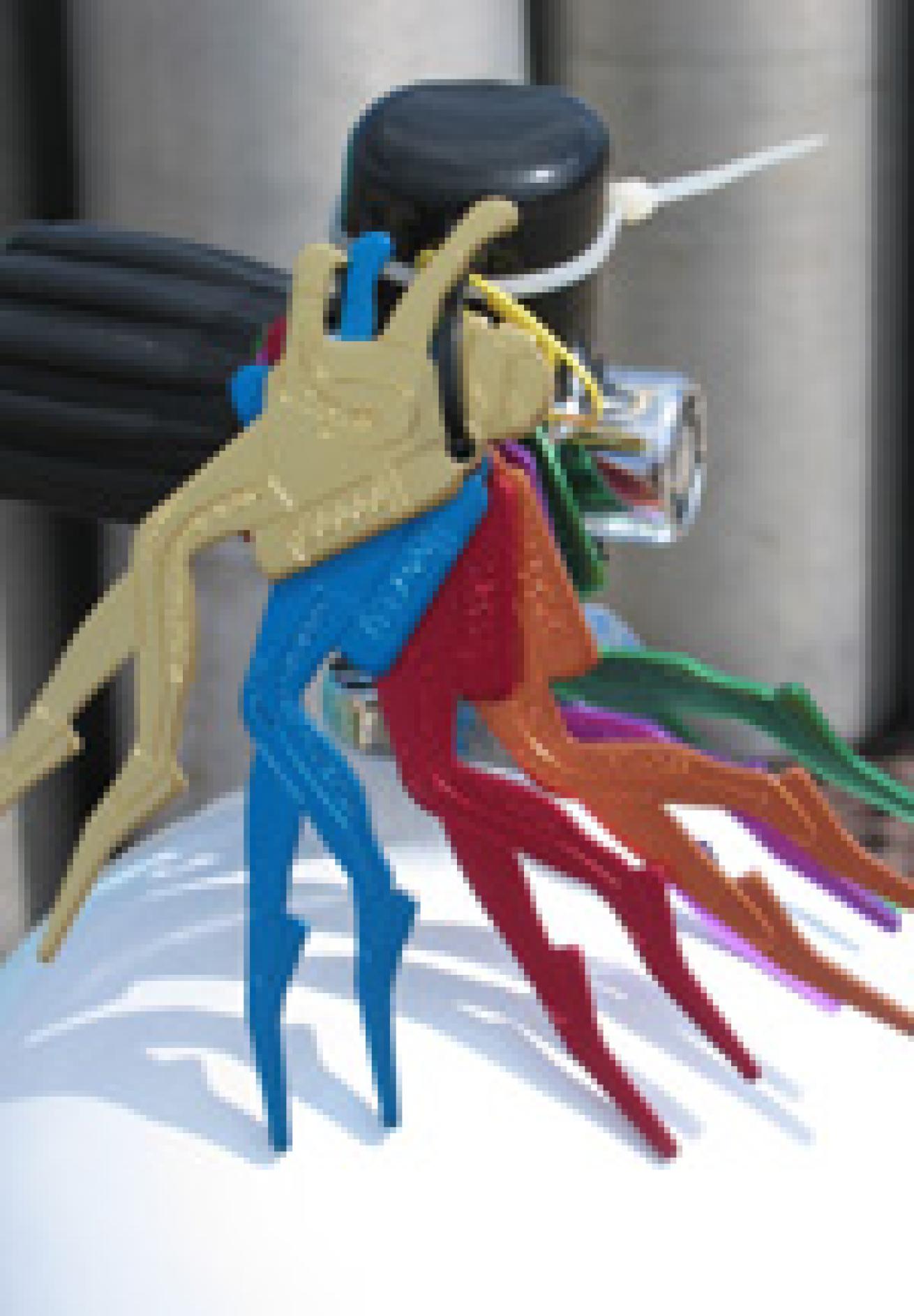
Scuba Lab made sure each team member had a marine park tag from Easy Divers. The voluntary $10 donation helps fund eco-friendly initiatives such as buoy projects and reef clean-ups. Not only does the money go to a good cause, the diver-shaped tag doubles as a bottle opener! The tags have been available since 2000, produced in a different color each year.
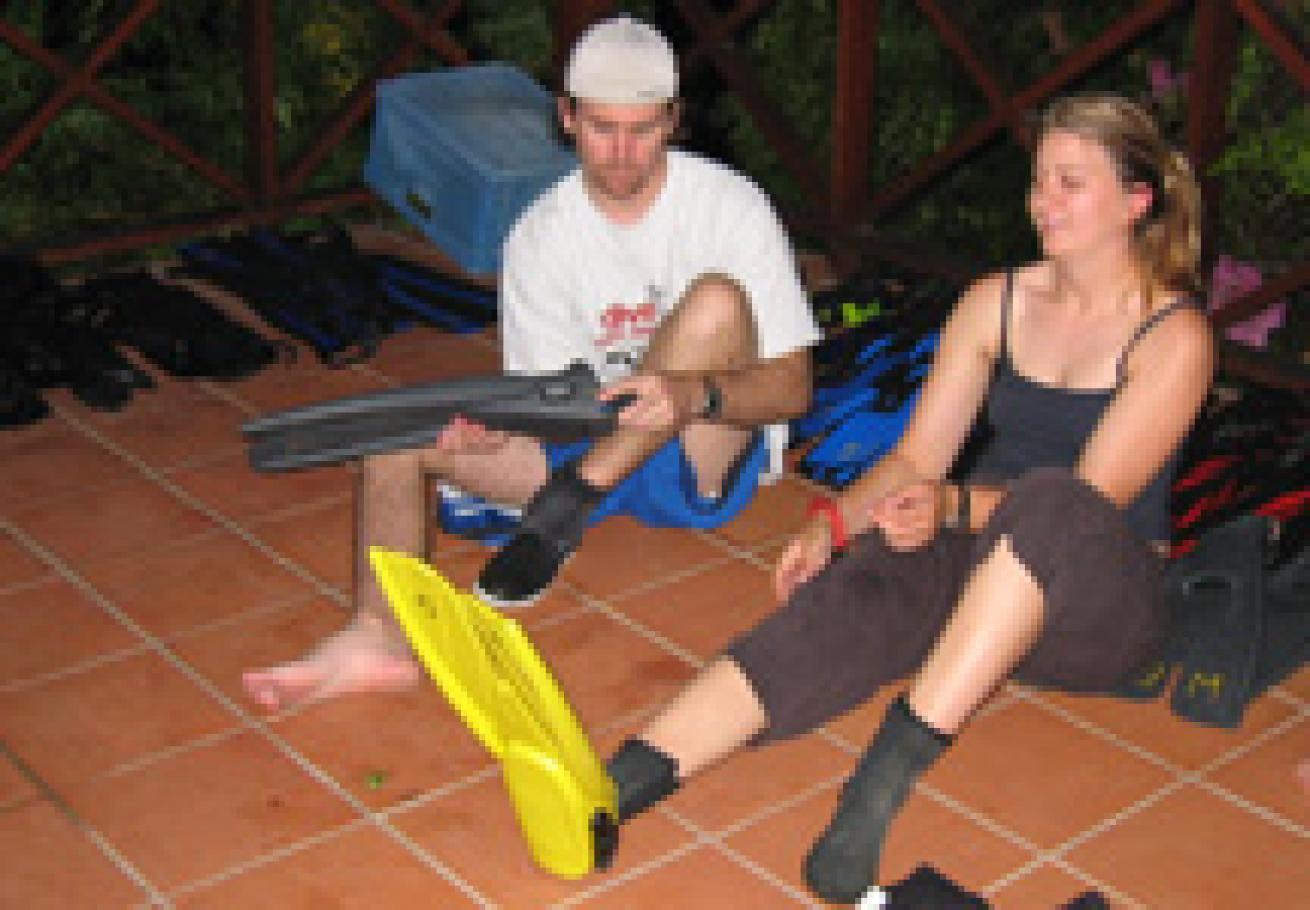
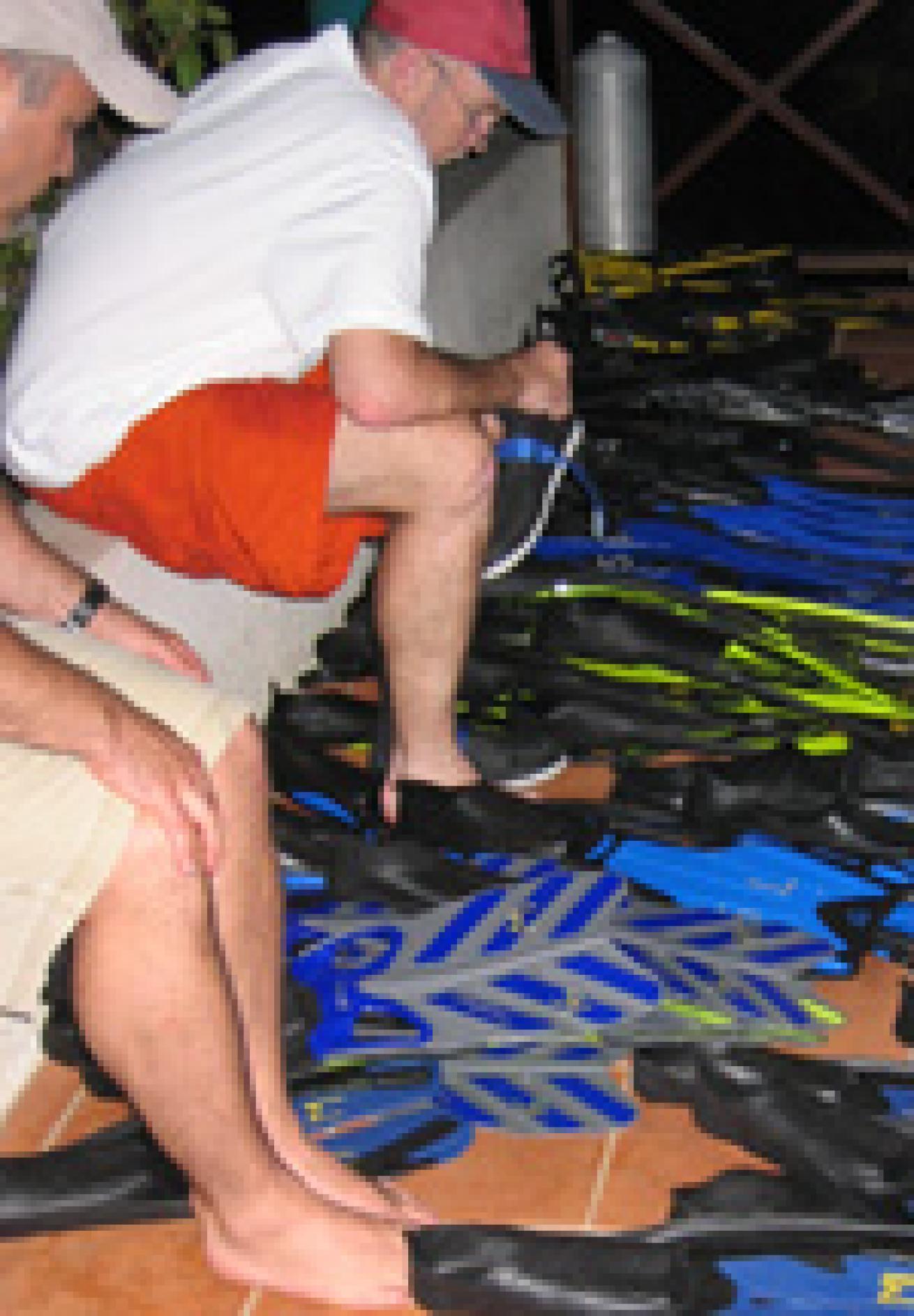
The first order of business each year is matching up testers with fin sizes. Confronted with carefully orchestrated piles of numbered fins, testers work their way through each batch and tell Scuba Lab staff what size they take for each number.
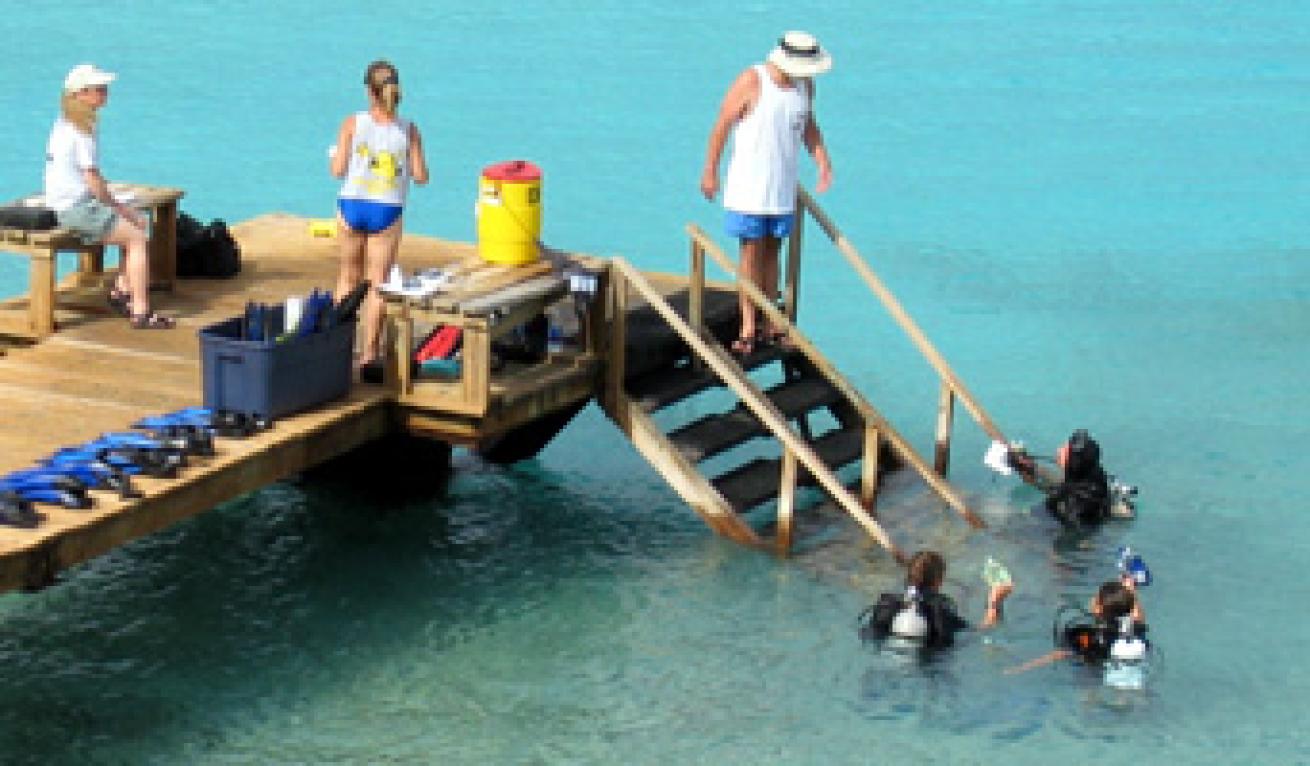
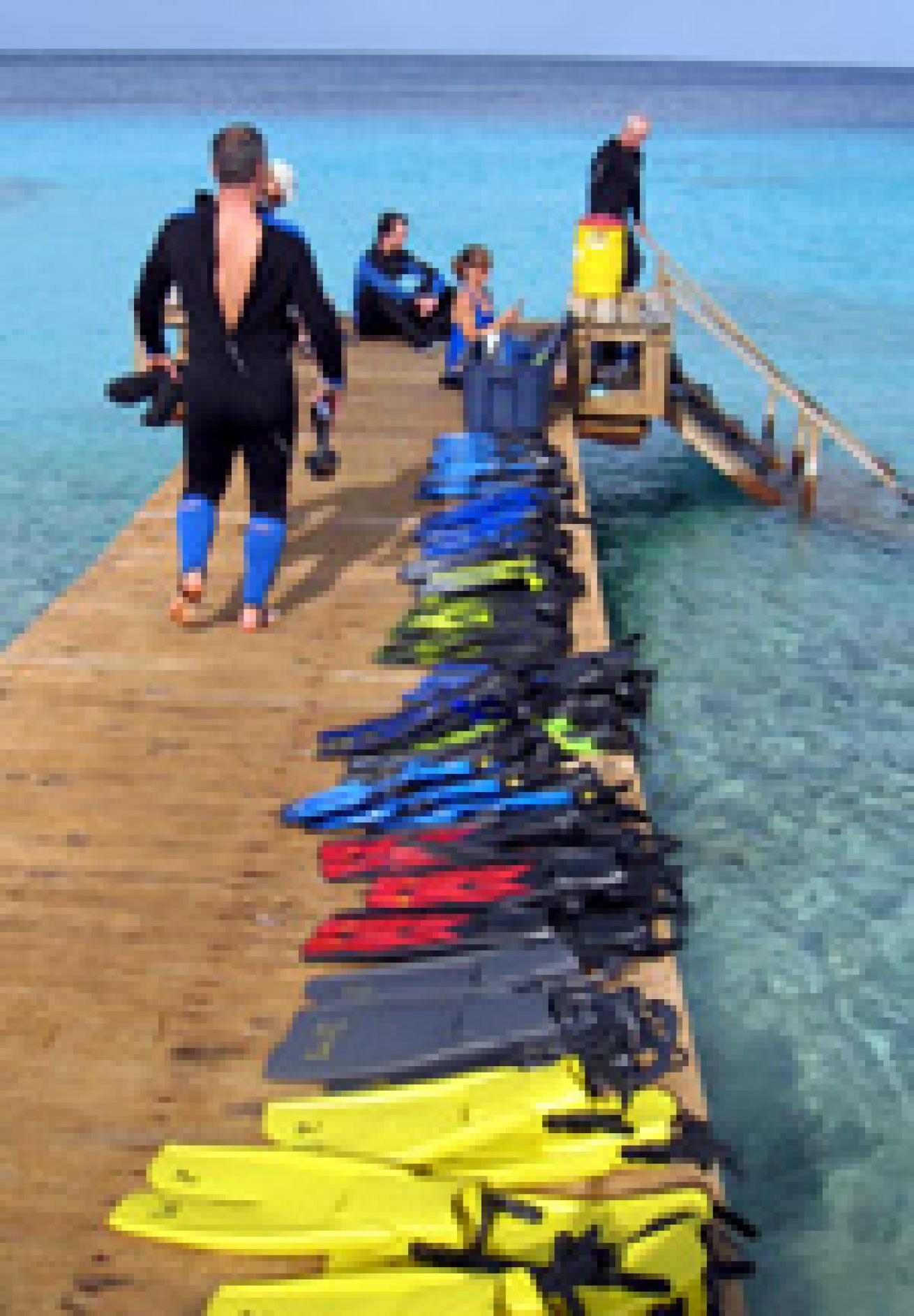
Each morning, buckets of fins lined the dock as test divers entered the water. Scuba Lab staff kept track of which fins each buddy team had tested and handed down new sets of fins as each team completed speed or slalom trials.
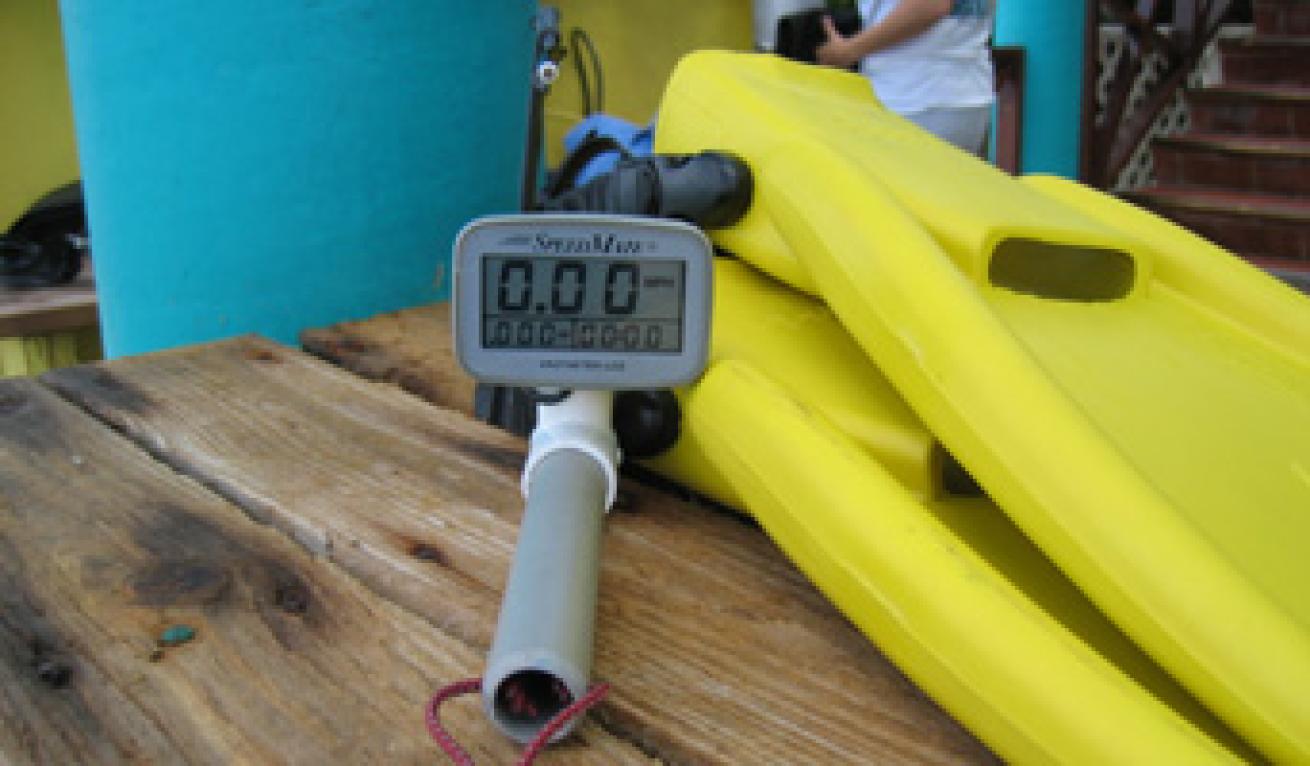
Testers use custom speedometers, pictured above, during the speed trials. Holding the device in front of them with arms outstretched, a propeller spins and activates the digital display as testers fin in a straight line along a course marked under water.
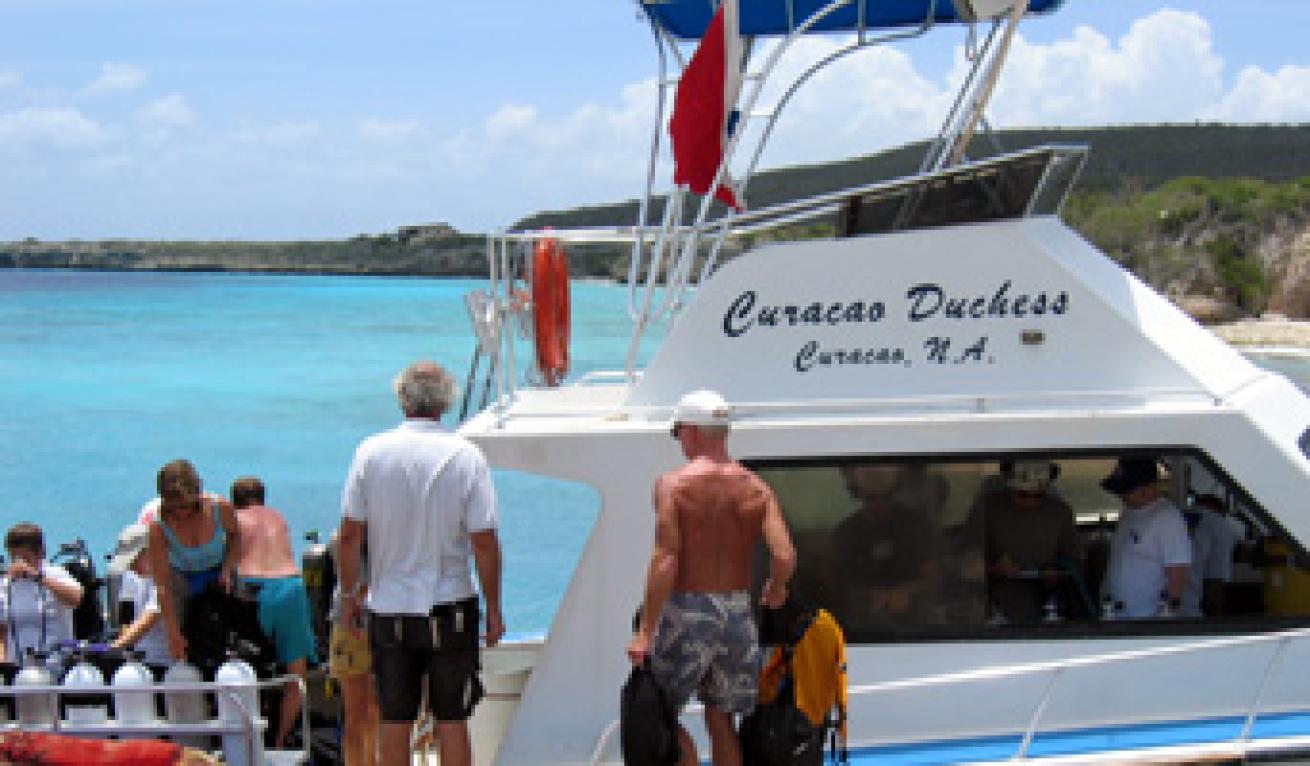
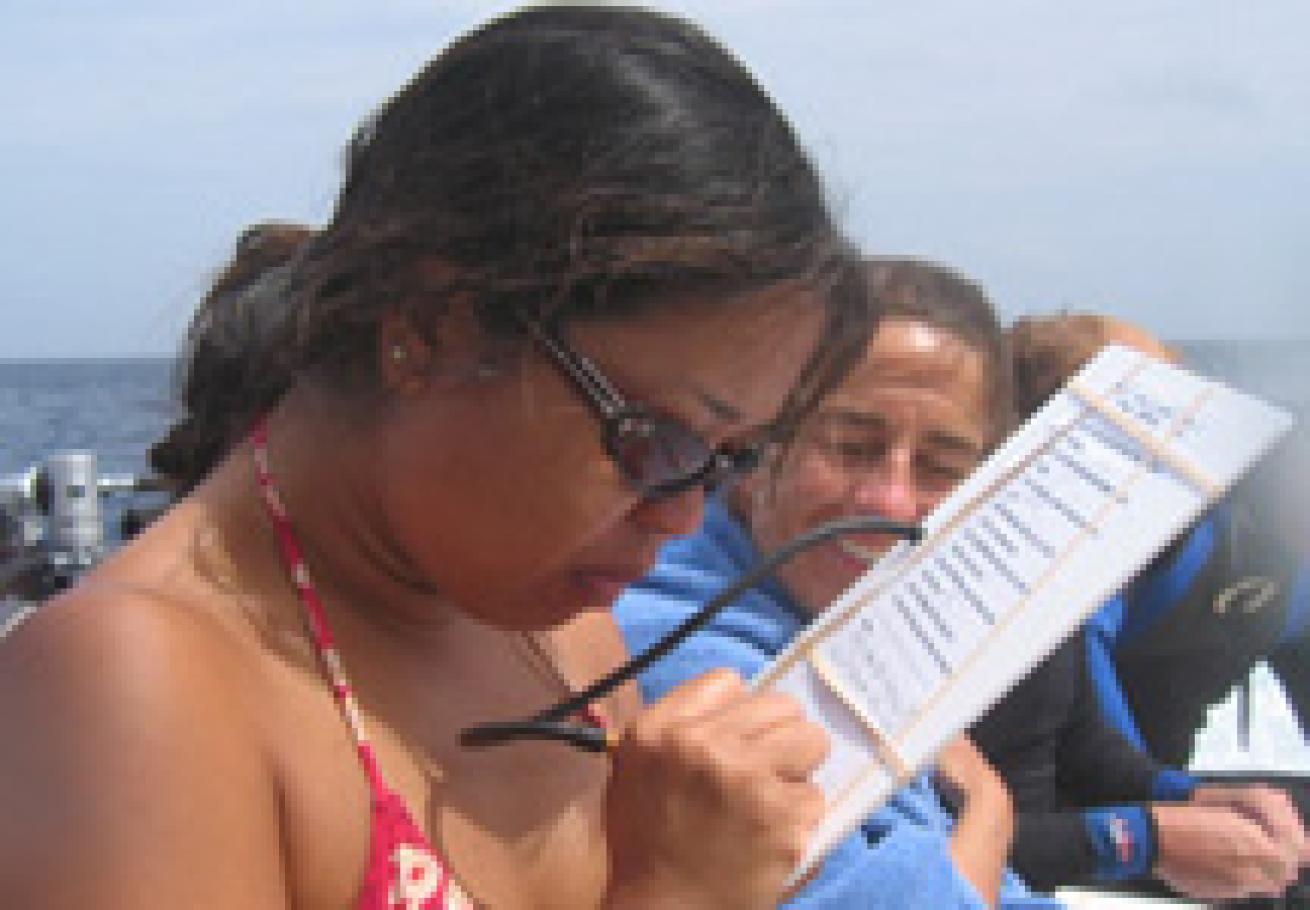
Every day after lunch, testers boarded one of Easy Divers' boats for a 2-tank excursion. Wearing a different pair of test fins for each dive, they evaluated how the fins performed in "real world" diving situations. In the water and during surface intervals, they logged their comments on slates outfitted with waterproof paper.
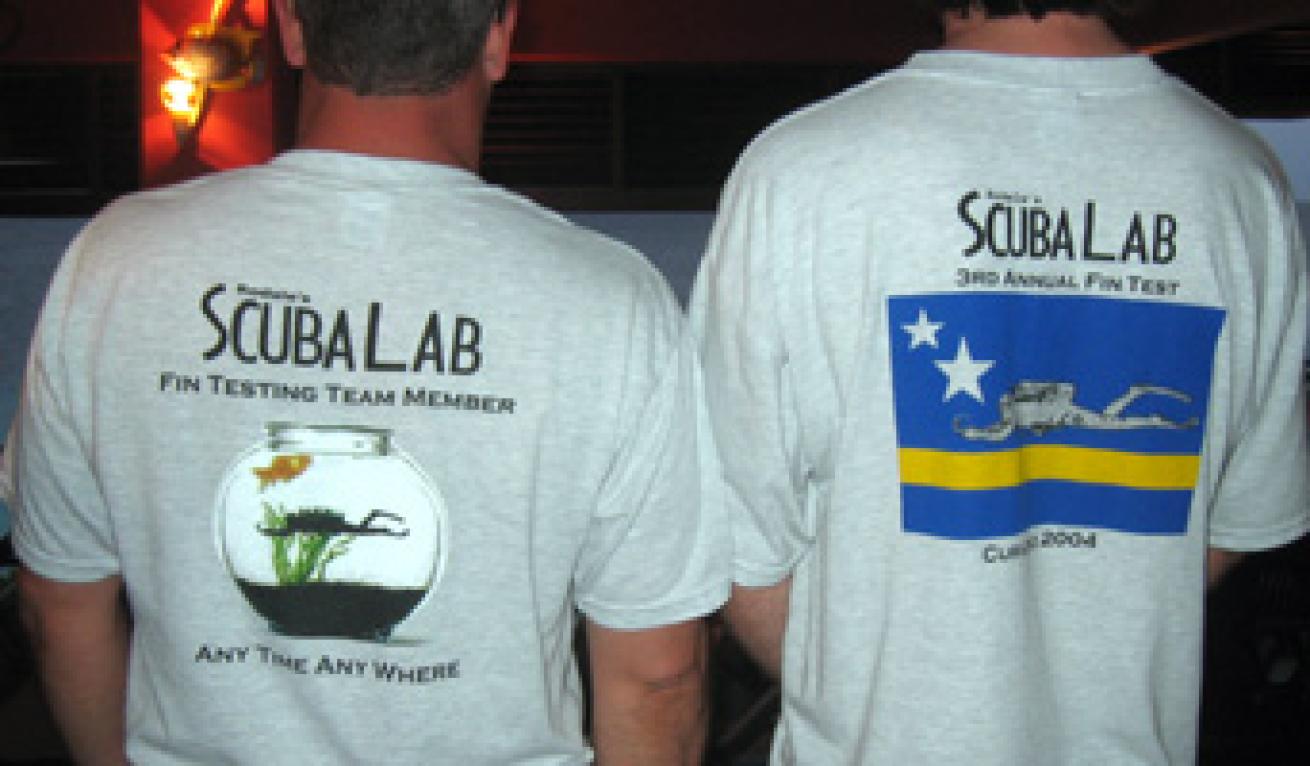
At the end of this year's fin tests, the volunteer testers are left with the memories, pictures, videos, and, yes, the T-shirts, and the hope that next year will bring another week of fin testing and friendship on an island in the sun.

